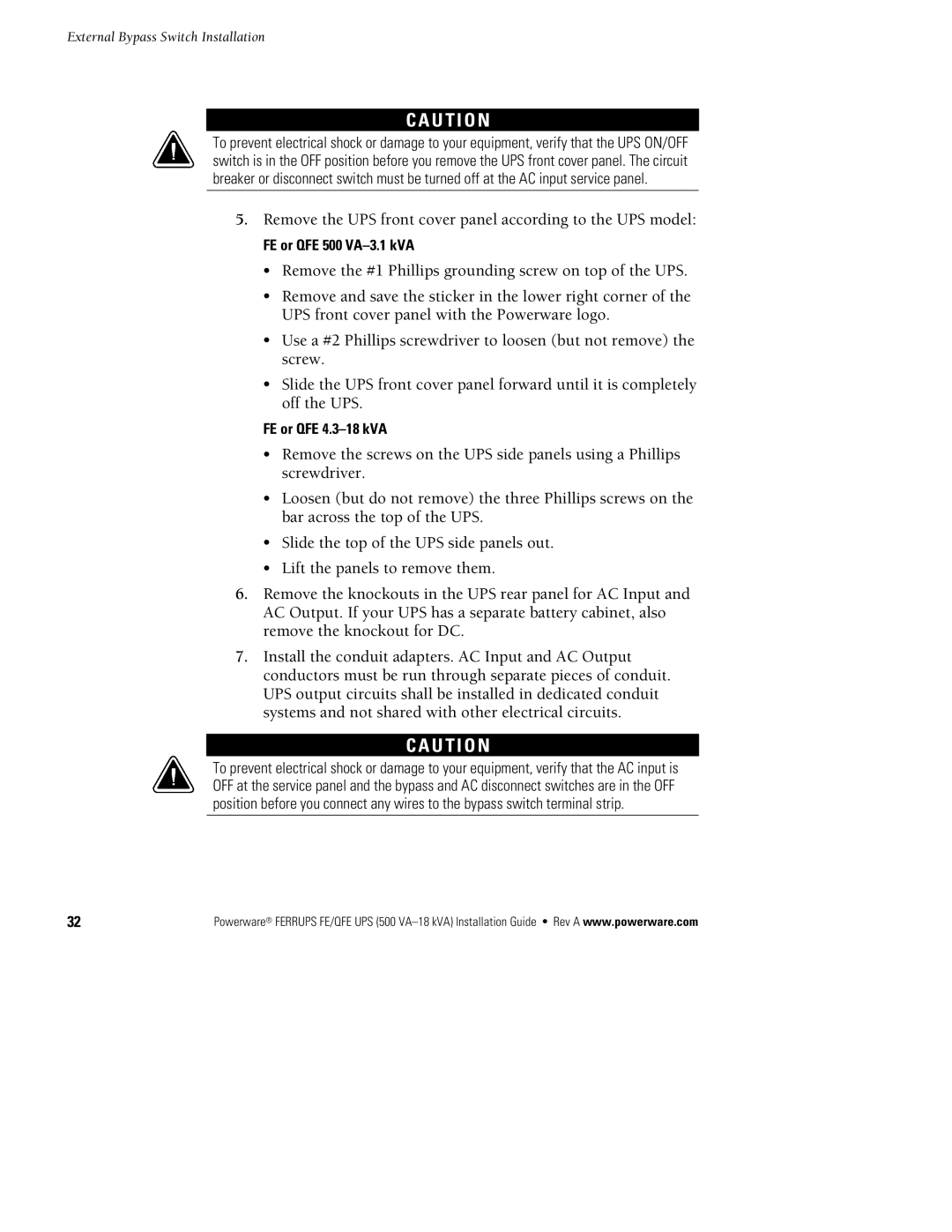FE/QFE 500VA specifications
The Powerware FE/QFE 500VA is a compact and efficient uninterruptible power supply (UPS) designed to provide reliable power protection for critical electronic equipment. This model is particularly well-suited for small servers, workstations, and networking hardware, ensuring operational continuity in the event of power disturbances, such as surges, brownouts, and outages.One of the key features of the Powerware FE/QFE 500VA is its advanced voltage regulation technology. This ensures that connected devices receive consistent voltage levels regardless of fluctuations in the incoming power supply. The UPS incorporates Automatic Voltage Regulation (AVR), which stabilizes output voltage and protects sensitive electronics from voltage sags and spikes.
In terms of power capacity, the FE/QFE 500VA is rated for 500VA/300W, making it a robust choice for lightweight applications. It offers battery backup capability, allowing connected devices to continue operating during power outages. The unit’s internal battery is designed for easy replacement, minimizing downtime and maintenance costs.
Another significant characteristic of the Powerware FE/QFE 500VA is its user-friendly interface. The UPS features LED indicators that provide real-time information on battery status, load level, and operational conditions. This intuitive display allows users to quickly assess the performance of the UPS without extensive technical knowledge.
The product is also equipped with surge protection, which safeguards connected devices from voltage spikes that can otherwise cause irreparable damage. This feature is essential for environments with frequent electrical disturbances, providing peace of mind for users.
With dimensions that support efficient use of space, the Powerware FE/QFE 500VA can easily fit into various setups, whether in an office, server room, or home environment. Its lightweight design adds to its portability, allowing users to relocate it as necessary.
In summary, the Powerware FE/QFE 500VA is a highly reliable and feature-rich UPS solution. Its advanced voltage regulation, robust power capacity, user-friendly interface, surge protection, and compact form factor make it an ideal choice for protecting essential electronics from power-related issues. This UPS not only enhances the reliability of critical devices but also contributes to operational efficiency, making it a valuable investment for both personal and professional use.

